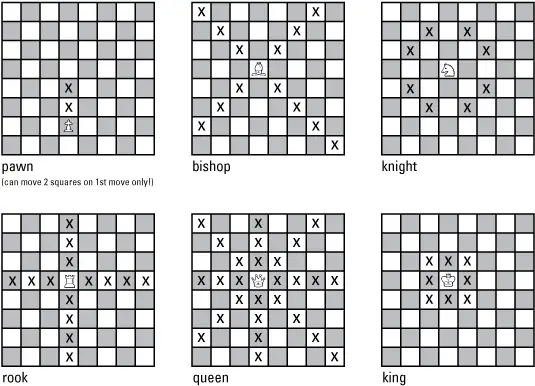Learning chess offers numerous benefits for individuals of all ages and backgrounds. Here are some of the key reasons why chess is considered worth learning:
6 Reasons Why Chess Is Worth Learning
1. Cognitive Development
Chess helps improve various cognitive skills, such as:
- Concentration: Focusing on the board and making strategic moves requires undivided attention.
- Pattern recognition: Identifying patterns on the board is crucial for spotting opportunities and threats.
- Memory: Retaining information about each piece’s movements and their potential moves.
- Planning: Developing a strategy to achieve checkmate.
- Problem-solving: Analyzing the board and making the best move based on available options.
2. Improved Communication
Learning chess can enhance:
- Written and oral presentation skills: Practicing chess can help with organizing thoughts and presenting ideas in a clear and concise manner.
- Self-esteem: Gaining proficiency in chess can boost confidence and improve self-esteem.
3. Good Sportsmanship
Chess teaches:
- Fair play: Adhering to the rules and playing with integrity.
- Respect for opponents: Developing a sense of sportsmanship and respect for opponents of all skill levels.
4. Time Management
Chess helps develop:
- Patience: Waiting for the right opportunity and taking your time to make strategic moves.
- Time management: Managing time effectively to make the best moves and achieve checkmate.
5. Social Benefits
Playing chess can:
- Improve social skills: Engaging in chess can help with social interactions and relationship-building.
- Connect with others: Sharing experiences and tips with fellow chess players can foster friendships and expand your social circle.
6. Reduced Stress
Engaging in chess can:
- Help reduce symptoms or severity of certain health conditions: Such as dementia, ADHD, and panic attacks.
- Provide a mental break: Escaping into the world of chess can offer temporary relief from stress and anxiety.
Whether you start learning chess as a child or an adult, it can be a rewarding and enjoyable experience.
Many people find chess to be a challenging and engaging game that can provide a sense of accomplishment and satisfaction.
Ultimately, the decision to learn chess depends on your personal interests and goals. If you enjoy intellectual challenges and want to improve your cognitive skills, chess can be a worthwhile pursuit.
What Are The Basic Rules Of Chess?
The basic rules of chess govern the play of the game, which is a two-player abstract strategy board game.
Each player controls 16 pieces of six types on a chessboard, and the objective is to checkmate the opponent’s king, which occurs when a king is threatened with capture and has no escape.
Here are the basic rules:
- Setup: Each player starts with 16 pieces: one king, one queen, two rooks, two knights, two bishops, and eight pawns. The pieces are placed on their respective squares on the chessboard
- Moving pieces: Each piece has its own unique movement rules. Pawns move forward one or two squares on their first move, and one square at a time after that. Rooks, bishops, knights, and queens move in various ways, and each piece can only move to a square that is unoccupied or occupied by an enemy piece
- Capturing: Pawns can capture other pieces diagonally one square ahead of their starting position. Other pieces can capture enemy pieces by moving to their square and replacing the captured piece
- Check and checkmate: A player is in check when their king is threatened with capture. Checkmate occurs when a king is threatened with capture and has no escape.
- Turns: Players alternate turns, with the white player moving first, followed by the black player. Each player takes one move at a time, and it is not legal to skip a move even when having to move is detrimental.
- Draws: A game can end in a draw if the same exact position is repeated three times, or if 50 consecutive moves have been played without a player moving a pawn or capturing a piece
- Resignation: A player can resign at any time during the game, which results in the loss of the game.
Remember that each piece has its own strengths and weaknesses, and understanding how to use them effectively is the key to winning at chess.
What are the different types of chess pieces and their moves?

In chess, there are six different types of pieces, each with unique movement rules. Here are the basic moves for each piece:
- King: Moves one square in any direction
- Queen: Moves any number of squares diagonally, horizontally, or vertically
- Rook: Moves any number of squares horizontally or vertically
- Bishop: Moves any number of squares diagonally
- Knight: Moves in an L-shape, consisting of two squares in a straight direction and then one square perpendicular to that
- Pawn: Moves one square forward on its first move, and one square at a time after that. On its first move, a pawn can move two squares forward.
The pawn is the most important piece in the opening, as it is the key aspect of initial attacks and can be converted into any piece other than the King if it reaches the opposite end of the board. The rook is a very aggressive piece and is often used to control a 4×4 area in the center of the board.
The bishop is a long-range piece that moves diagonally and can cover a large area of the board. The knight is a versatile piece that can move in an L-shape, making it useful for various tactics.
The queen is the most powerful piece on the board, as it can move in any direction and has the highest range.
Piece Movement

Chess Strategy
Chess strategy involves long-term goals and the use of various concepts to gain an advantage over your opponent. Some key strategic concepts include:
- Material Count: Understanding the total value of pieces for each player is crucial for evaluating positions
- Piece Activity: Ensuring that your pieces are actively participating in the game and not sitting idle is essential for a successful strategy
- Piece Mobility: Moving your pieces to more active positions can greatly improve your chances of winning
- Pawn Structure: A well-structured pawn formation can provide a solid foundation for your strategy
- Space: Controlling the center of the board and securing space for your pieces can give you an advantage.
- King Safety: Ensuring that your king is safe and not exposed to attacks is a key aspect of chess strategy.
By learning and applying these strategies, you can improve your chess game and increase your chances of winning.
Final Thoughts
The journey into the world of chess is not merely a pursuit of checkmates and victories; it is a profound exploration of strategic thinking, mental resilience, and the limitless capabilities of the human mind.
The intricate dance of pieces on the chessboard mirrors the complexities of life, offering invaluable lessons that extend far beyond the sixty-four squares.
As we contemplate the question, ‘Is chess worth learning?’ the resounding answer emerges not just in the thrill of a well-played game, but in the transformative power it holds to sharpen our intellects, enhance decision-making skills, and cultivate a mindset primed for success.
So, embark on this intellectual odyssey, for in the realm of chess, the journey is as rewarding as the destination, and the lessons learned resonate far beyond the confines of the board


